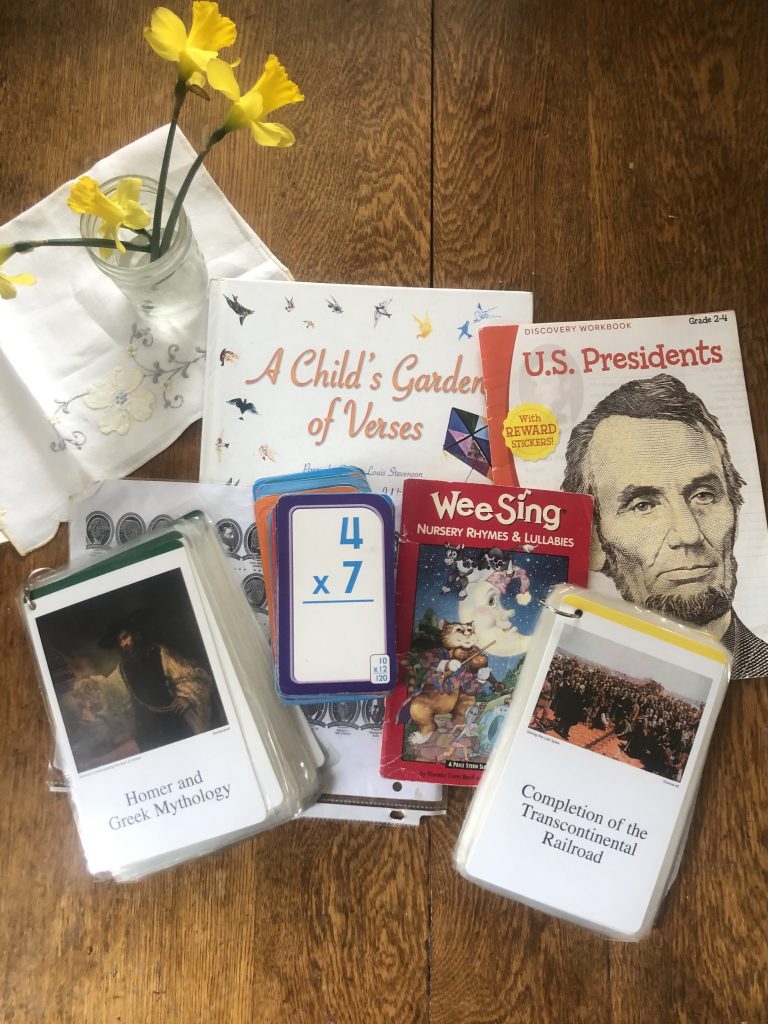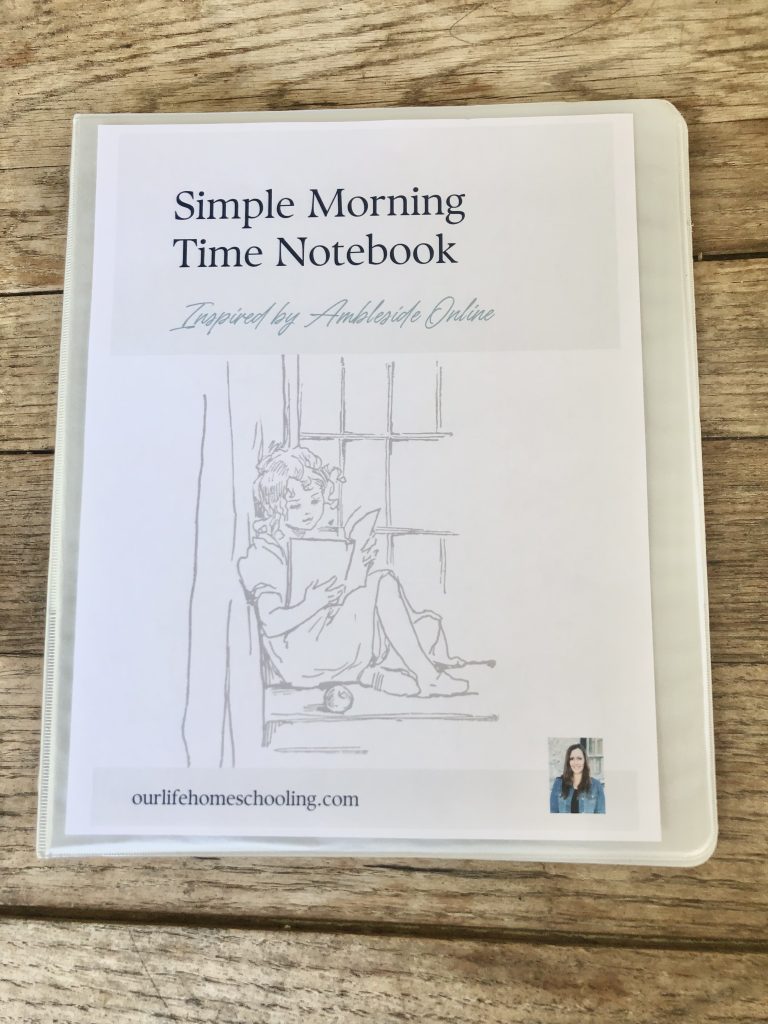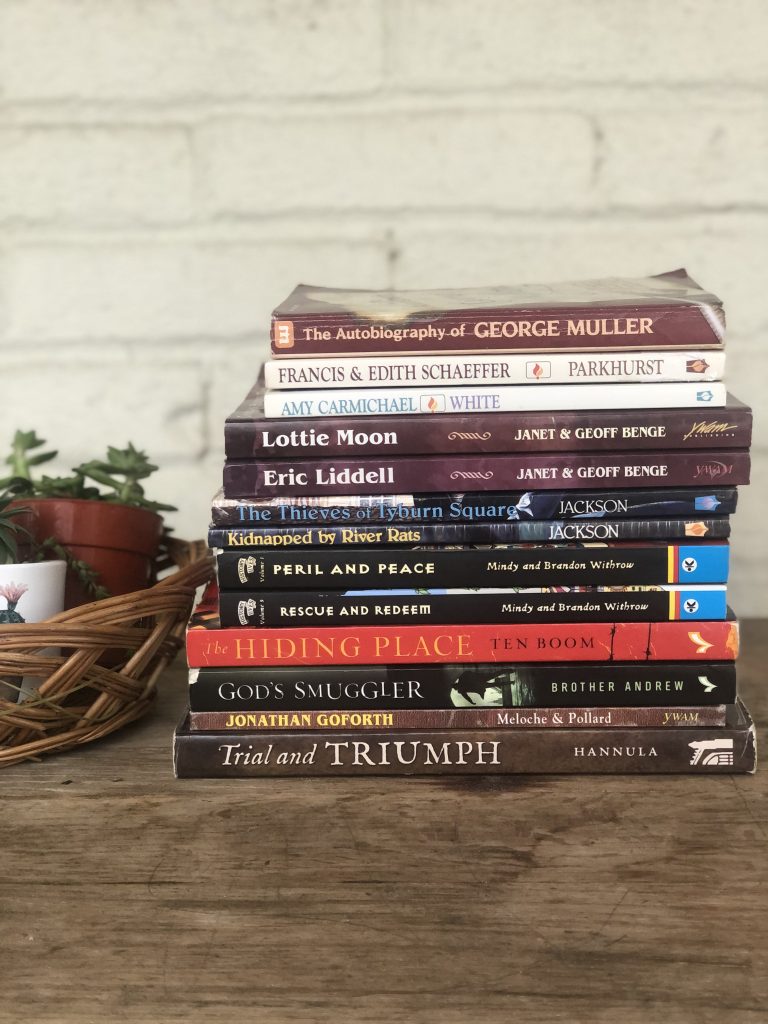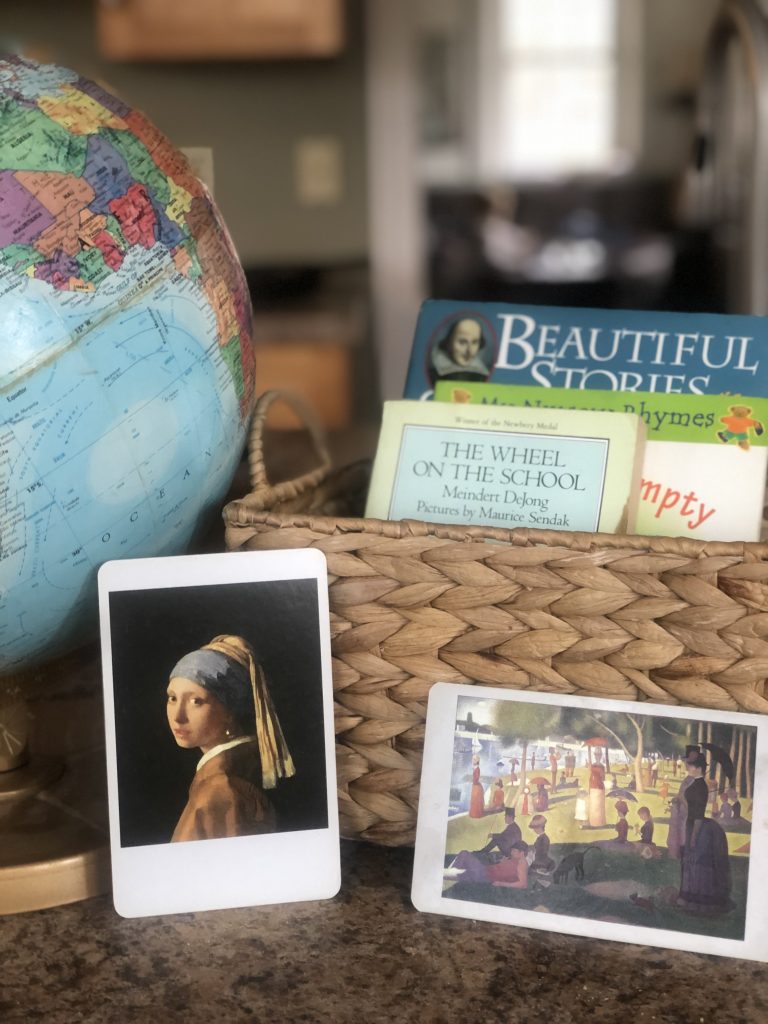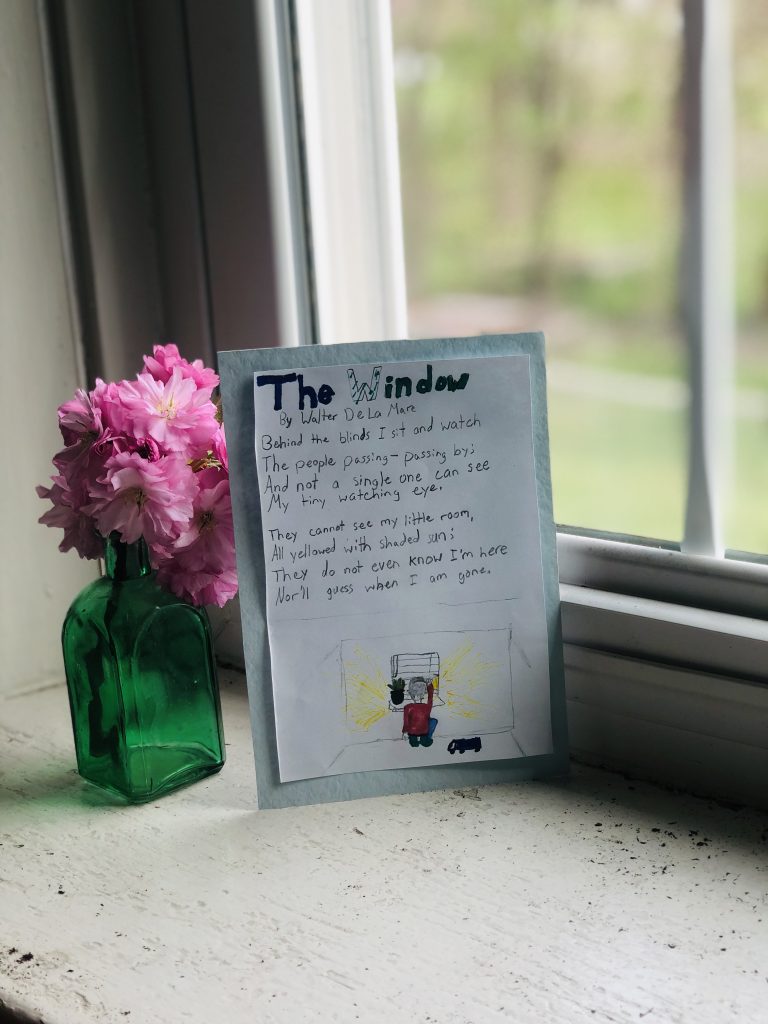2025-2026 Simple Morning Time Notebook
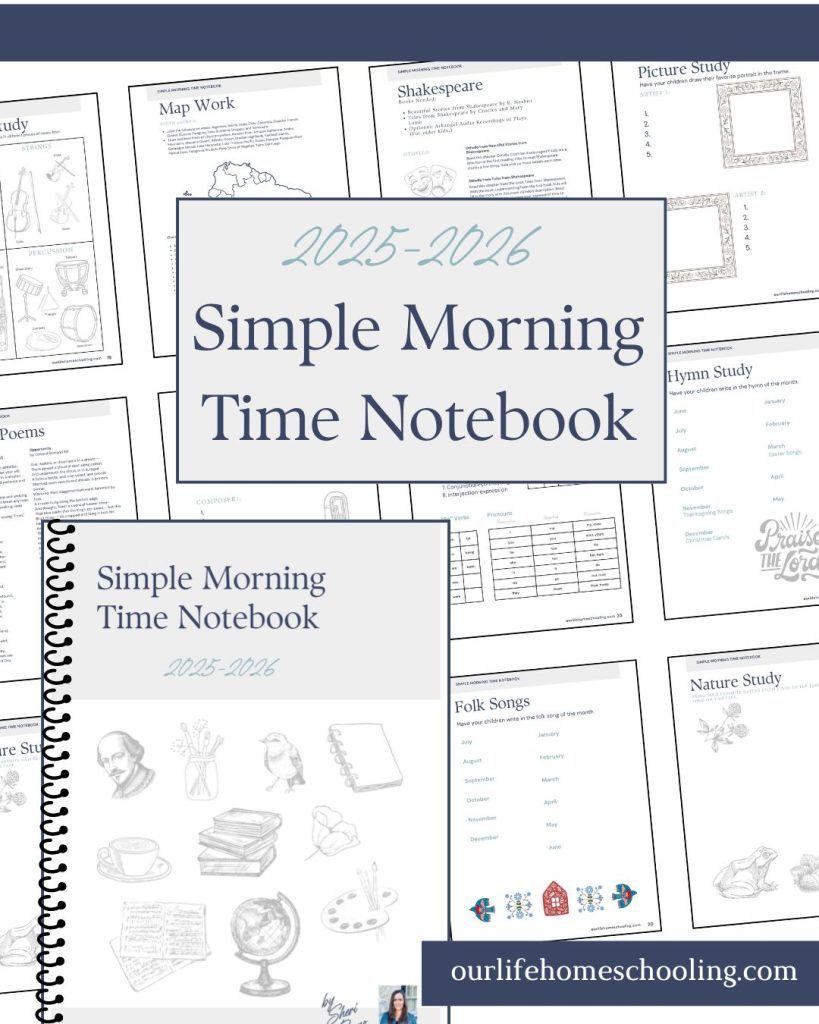
Would you like to simplify your homeschool? Try the 2025-2026 Simple Morning Time Notebook! Practicing a consistent Morning Time in our homeschool has been the ticket for teaching multiple ages while also covering the beautiful subjects beyond Reading, Writing, and Math.
When I learned, as a new homeschool mom, that I didn’t have to teach each of my children individually for every subject, a huge weight was lifted from my shoulders. While the 3Rs are best learned individually, other subjects like memory work, poetry, nature study, current events, and folk songs are more fun to learn in a group!
In Morning Time, we gather to learn the subjects that are best learned in a group setting. We observe truth, goodness, and beauty together. It is our inspiration for the day. It’s a time that will inspire everyone in the family, including Mom!
This is the notebook our family will be using this year. I hope you will join us!
How often do you practice Morning Time?
Generally, we have Morning Time 3-4 times per week, depending on how busy our schedule is for the week.
How long Is Morning Time?
We spend anywhere from 15 minutes to 45 minutes doing Morning Time. I have written several posts on the blog about this topic if you search for “Morning Time.”
How to Simplify Your Homeschool With Morning Time
7 Tips to a Peaceful Homeschool Morning Time
Teaching Bible In Morning Time
Simple Ideas for Memory Work in Morning Time
3 Christian Resources for Current Events In Morning Time
Simple Ideas for Poetry in Morning Time
Simple Morning Time Notebooks from Previous Years
Simple Morning Time Notebook Volume 1
Simple Morning Time Notebook Volume 2

Daily Studies/ Regular Studies
Some subjects we do daily; others we loop on a schedule. Rather than giving you a detailed schedule for when to do this, I have provided a basic framework so you can choose how best to fit it into your homeschool.
As a homeschool mom of 15 years, I know from experience that each homeschool day, especially if you have multiple children, is completely unpredictable. When it’s a good morning, we do more. At other times, when the day starts on the wrong foot, we do the very basics.
Subjects we do daily:
- Bible Reading/ Christian Biography
- Scripture Memory
- Other Memory Work
- Hymn Study
- Current Events
Subjects we do regularly or on a loop schedule: (5 minutes for each)
- Poetry
- Picture Study
- Composer Study
- Folk Songs
- Grammar
- Nature Study
- Shakespeare
- Math Review
- Proverb-A-Day
- Map Work
- Spelling Patterns
- Nature Study
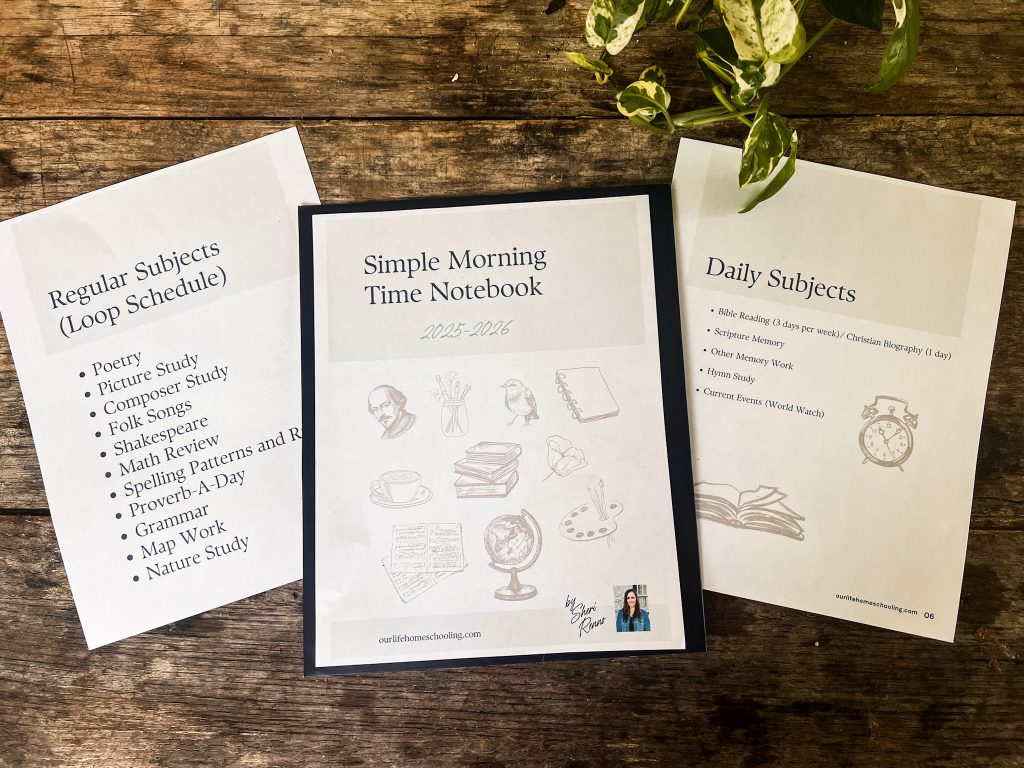
Charlotte Mason and Classical Education-Friendly
Early in our homeschool journey, I was introduced to Ambleside Online. (Ambleside Online is a free Charlotte Mason curriculum.) I loved it from the start!
As our family grew over the years (we now have 10 children), it became more difficult to continue doing AO, but I did not want my kids to miss out on the abundance that AO provides. Because of this, we adapt Ambleside Online to meet the needs of our family.
Our yearly choices are what I like to call the “ultra lite” version. We still enjoy the feast, but only as much as we can handle. We usually do only 1-2 poets, artists, or composers per year, for example, rather than three.
Additionally, I want our children to be immersed in the memory work that a classical education provides. I still remember poetry, Scripture, and hymns that were taught to me as a child. They have been very influential to my personal growth.
Adapting for a Large Family
This notebook is one of the ways we make a Charlotte Mason and Classical Education work for our large family. I have purposely kept many selections blank (composer study, picture study, folk song, hymn study) for you to fill in.
Because I find it more motivating to write down the title of a song/print after we have studied it (and less pressure to try to do every suggestion), I have kept many lines blank for your child to fill in. Additionally, it helps make the study to become more personal to kids when they have to handwrite the titles of songs or art pieces.
Daily Subjects
We try to do these studies daily in Morning Time.
Bible Reading/ Christian Biography
We read from a storybook Bible every morning. One morning a week we substitute the Bible reading with a Christian biography.
Scripture Memory
Read the passage once or twice out loud together each day. Focus less on “memorizing” and more on consistently reading the verse. After you hear it over and over, it starts to stick! We find it helpful to do a current verse and a review verse.
Other Memory Work
This year, we are learning the books of the Bible, the Gettysburg Address, the classic poem “Can’t” by Edgar Guest, and other poems. I focus less on memorizing and more on reading it once a day and letting the memorization happen naturally.
Hymn Study
We keep hymnals in hand because they are very useful to refer to when learning hymns. We do hymn study at night as part of our bedtime routine, but many people like doing it as part of Morning Time. During November, December, and March, we use our hymnals to review Thanksgiving, Christmas, and Easter songs.
Current Events
Our family enjoys World Watch News every morning together. This is a 10-minute news broadcast from a Christian perspective. I highly recommend a membership! ($6.99/month)
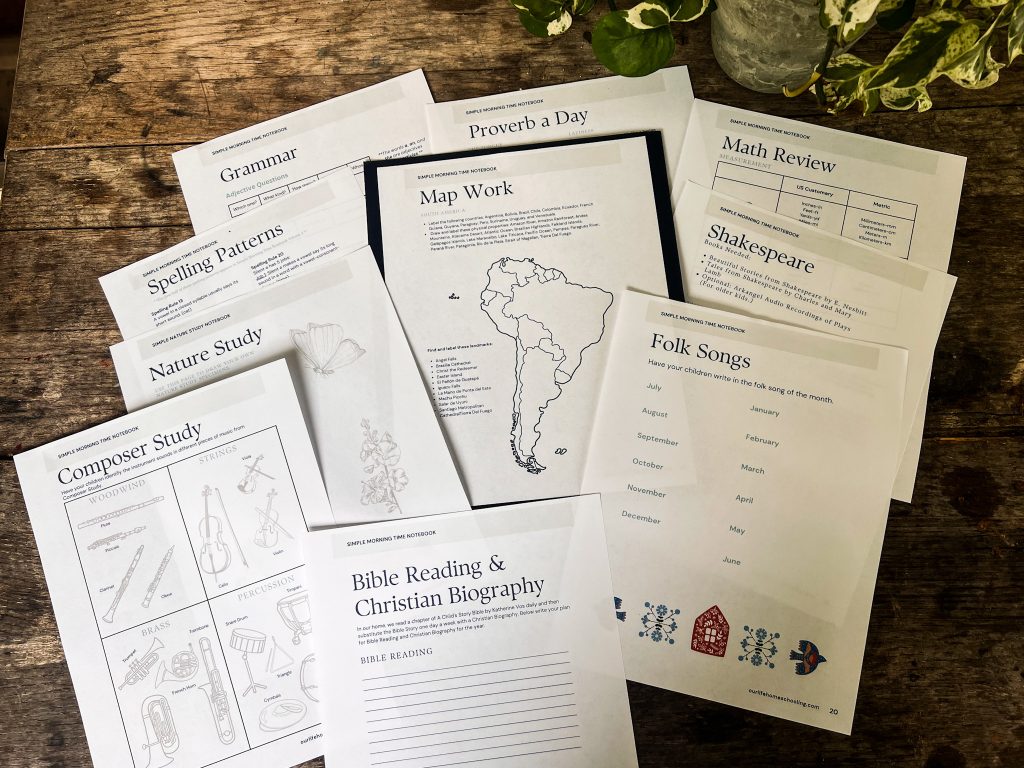
Regular Subjects (Loop Schedule)
We implement this section of the Simple Morning Time Notebook on a loop schedule. I am not rigid on how I do this. After we finish our Daily Subjects, we usually pick one or two Regular Subjects.
Each Regular Subject study should take approximately 5 minutes.
Poetry
When I select the poets we will be studying for the year, I try to choose one suitable for younger kids and one for older ones. This year, I have chosen Walter de la Mare and Emily Dickinson as the poets we will study. We study one poem at a time, reading it once a day until it becomes very familiar. Often, kids will memorize the poem from hearing it so much. I’ve also included a page of classic poems with inspiring themes. These are poems I love reading to my kids!
Picture Study
I have kept the artist choices and prints blank for your child to fill in. You can find Picture Study suggestions for the current year on Ambleside Online or pick your own. In the past, I have both had a picture in hand to study AND studied the picture from a computer. Both options work well. You can also purchase art prints from Simply Charlotte Mason. (simplycharlottemason.com)
Composer Study
Choose two composers you will study this year. I have found it very helpful to create a playlist from these on your phone. Have kids hand-write the songs in the blanks as you listen to them. Introduce your children to the instruments of the orchestra. Have them identify them as you listen to music.
Folk Songs
Choose the folk songs you will learn each month and have your children write them in as you complete them. You may want to create a playlist for these as well.
Shakespeare
This year, we are reading the Shakespeare plays Othello and The Taming of the Shrew. Because Shakespeare has such deep plots and several characters, I like to expose our kids to Shakespeare through a progression of readings.
First, I read it from “Beautiful Stories from Shakespeare“ by Edith Nesbit. Secondly, I read the same play from “Tales from Shakespeare” by Charles and Mary Lamb, which fills in more of the details. For high school kids, listening to Arkangel audio versions of the plays is a wonderful extension.
Math Review
For Math Review, we will learn basic measurement in U.S. Customary and Metric units. We will also study unit conversions, including how to multiply or divide to convert metric units.
Samples of questions to ask:
- What do we use to measure length? weight? capacity? for US Customary? Metric?
- How many inches are in a foot? a yard? How many cups are in a pint? a gallon? etc.
- (Older students) One meter is how many kilometers? millimeters? etc.
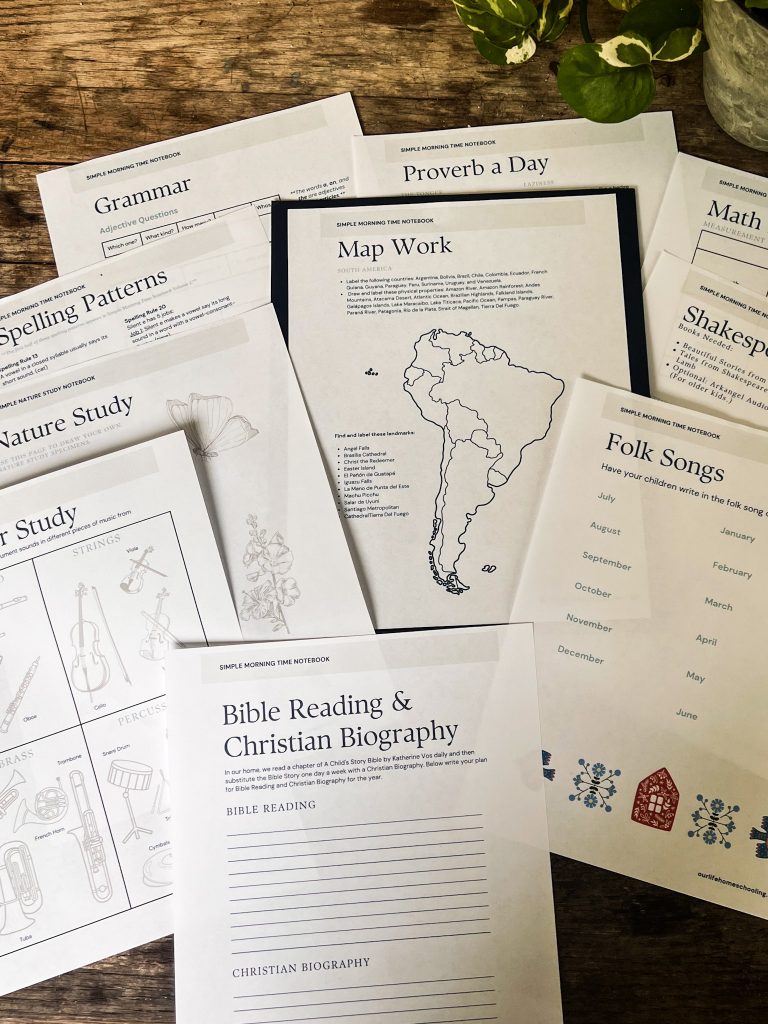
Spelling Patterns and Rules
I use copywork as the main method for teaching Spelling. Writing lists of words out of context does not seem to be an effective way to learn to spell, in my opinion. In addition to copywork, however, I like to review spelling patterns and rules to help kids see why words are spelled the way they are. Read one Spelling Rule during Morning Time and have your kids try to come up with their own examples.
Proverb-A-Day
When you read through the book of Proverbs, each chapter is full of so many treasures, it can be hard to walk away with one solid application. I wanted to find a way to sort out individual proverbs by topic and soak in them a little, and this is what inspired the Proverb-a-Day page. Read one proverb in Morning Time (there are enough for you to do about one a week.) Ask your kids what they think it means. This should take only about 5 minutes.
Grammar
Learning the parts of speech and being able to diagram a sentence has come under criticism of late, but I believe that understanding the patterns of our speech helps kids communicate well in both oral and written form. Choose a sentence from one of your favorite current read-alouds. Write it on a whiteboard. Using the grammar charts provided, label each part of speech.
Map Work
We are learning about the countries and physical properties of South America. Using a map, kids will label the countries and capitals of South America along with prominent physical features.
Nature Study
Although I typically assign our kids to do their Nature Study Notebook as part of their checklist, many children enjoy sketching during Morning Time. Pull out some field guides or have them collect specimens to copy during Morning Time.
Read Aloud Book List
If you enjoy reading aloud as part of your Morning Time, keep track of all the books you read during the year.
Get your 2025-2026 Simple Morning Time Notebook!
If you would like your own copy of the 2024-2025 Simple Morning Time Notebook that we will use this year, you can purchase a digital download for $9.00 by clicking on the button below.
I would love for you to join us in our Morning Time this year!
Leave a Comment!
What questions do you have about the Simple Morning Time Notebook?
Have you used the Simple Morning Time in the past? Any tips for others? What worked well? What would you change? Share your experience!
